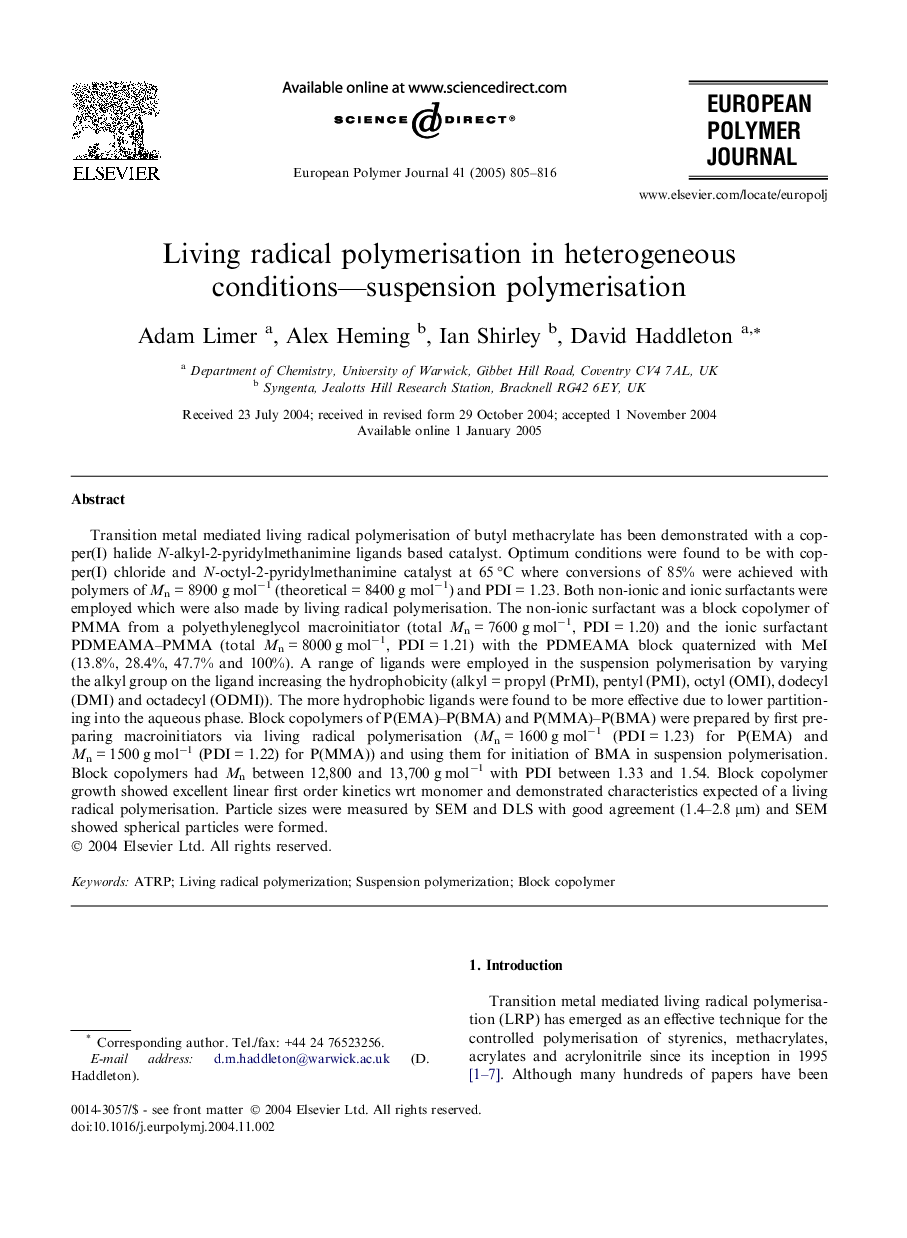| Article ID | Journal | Published Year | Pages | File Type |
|---|---|---|---|---|
| 10608867 | European Polymer Journal | 2005 | 12 Pages |
Abstract
Transition metal mediated living radical polymerisation of butyl methacrylate has been demonstrated with a copper(I) halide N-alkyl-2-pyridylmethanimine ligands based catalyst. Optimum conditions were found to be with copper(I) chloride and N-octyl-2-pyridylmethanimine catalyst at 65 °C where conversions of 85% were achieved with polymers of Mn = 8900 g molâ1 (theoretical = 8400 g molâ1) and PDI = 1.23. Both non-ionic and ionic surfactants were employed which were also made by living radical polymerisation. The non-ionic surfactant was a block copolymer of PMMA from a polyethyleneglycol macroinitiator (total Mn = 7600 g molâ1, PDI = 1.20) and the ionic surfactant PDMEAMA-PMMA (total Mn = 8000 g molâ1, PDI = 1.21) with the PDMEAMA block quaternized with MeI (13.8%, 28.4%, 47.7% and 100%). A range of ligands were employed in the suspension polymerisation by varying the alkyl group on the ligand increasing the hydrophobicity (alkyl = propyl (PrMI), pentyl (PMI), octyl (OMI), dodecyl (DMI) and octadecyl (ODMI)). The more hydrophobic ligands were found to be more effective due to lower partitioning into the aqueous phase. Block copolymers of P(EMA)-P(BMA) and P(MMA)-P(BMA) were prepared by first preparing macroinitiators via living radical polymerisation (Mn = 1600 g molâ1 (PDI = 1.23) for P(EMA) and Mn = 1500 g molâ1 (PDI = 1.22) for P(MMA)) and using them for initiation of BMA in suspension polymerisation. Block copolymers had Mn between 12,800 and 13,700 g molâ1 with PDI between 1.33 and 1.54. Block copolymer growth showed excellent linear first order kinetics wrt monomer and demonstrated characteristics expected of a living radical polymerisation. Particle sizes were measured by SEM and DLS with good agreement (1.4-2.8 μm) and SEM showed spherical particles were formed.
Related Topics
Physical Sciences and Engineering
Chemistry
Organic Chemistry
Authors
Adam Limer, Alex Heming, Ian Shirley, David Haddleton,
